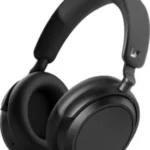Sony VS Sennheiser, When it comes to high-quality audio equipment, few names stand out like Sony and Sennheiser. Both companies have earned stellar reputations in the audio world, each offering a range of products designed to suit different tastes and needs. Whether you’re a casual listener, an audiophile, or a professional, the question of Sony vs Sennheiser can be a tough one. In this article, we will compare their headphones, sound quality, design, features, and value to help you make an informed choice.
Sound Quality: Which Brand Offers the Best Audio Experience?
Sennheiser is known for its rich, natural sound quality, especially in high-end models. Their headphones are often praised for delivering a balanced and clear sound signature, ideal for audiophiles and music enthusiasts who value detail and accuracy. Sennheiser’s headphones, such as the HD 600 series, have a reputation for an open, airy sound with a broad soundstage, making them excellent for critical listening and long listening sessions.
On the other hand, Sony has made significant strides in the audio world, particularly in the area of noise cancellation and sound customization. Sony headphones, such as the WH-1000XM5, are known for their deep bass, excellent clarity, and advanced sound processing. Sony often incorporates features like customizable sound profiles, which can appeal to those who enjoy tweaking their audio to match their personal preferences. Sony’s audio tends to emphasize bass more, making them a great choice for users who prefer a more dynamic sound.
Design and Comfort: Which Headphones Are More Comfortable for Long Listening Sessions?
In terms of design, both brands offer a variety of headphones with different aesthetics and comfort levels.
Sennheiser headphones, especially their high-end models, are designed with premium materials such as high-grade plastic and metal, ensuring durability and comfort. The HD 660S and other open-back models have ear cups that are often plush and comfortable for extended wear. However, their open-back design means they are less suitable for blocking outside noise, so they may not be ideal for use in noisy environments.
Sony, on the other hand, tends to focus on creating sleek, modern designs with a premium feel. The WH-1000XM5 and WH-1000XM4 are well-loved for their comfortable, over-ear design with soft memory foam ear cups that provide a snug yet comfortable fit. Sony’s noise-canceling capabilities, combined with an ergonomic design, make their headphones excellent for travel or commuting, offering an immersive listening experience even in noisy environments.
Noise Cancellation and Additional Features
One area where Sony truly shines is in noise cancellation technology. Sony’s WH-1000XM series is consistently rated among the best in the world for noise cancellation, with their adaptive noise-canceling technology that automatically adjusts to the environment. Whether you’re flying on an airplane or working in a crowded coffee shop, Sony’s noise cancellation ensures a quiet listening experience.
While Sennheiser offers noise-canceling models, like the Momentum 4 Wireless, they generally don’t match the level of noise-canceling prowess seen in Sony’s flagship models. Sennheiser focuses more on audio fidelity and comfort, while Sony focuses on delivering an all-around seamless experience with top-tier features such as touch controls, voice assistants, and long battery life.
Battery Life: How Long Can You Listen?
When it comes to battery life, Sony often has the upper hand, particularly in its noise-canceling headphones. The WH-1000XM5, for example, offers up to 30 hours of playback with noise cancellation active. Even with features like quick charging, Sony’s models tend to last longer than their Sennheiser counterparts.
Sennheiser, while offering competitive battery life, often falls a bit short in this area. Models like the Momentum 4 Wireless offer up to 60 hours of playback, but when noise cancellation is factored in, the numbers may drop. Still, Sennheiser’s battery life is solid, and for those who prioritize sound quality over battery longevity, it remains a great option.
Price and Value: Which Offers the Best Bang for Your Buck?
Pricing is often a key consideration when comparing Sony vs Sennheiser. Generally, Sennheiser tends to offer a more premium pricing structure, especially for their high-end audiophile models. If you’re looking for the best sound quality for critical listening, you may find that the cost is higher, but the investment could be worthwhile if you’re after ultimate clarity and detail.
Sony, on the other hand, offers a wider range of products at varying price points, from mid-range to high-end. While their noise-canceling models are typically on the pricier side, they tend to offer more features and versatility. For those looking for value and advanced features like noise cancellation, touch controls, and sound customization, Sony provides great options without always breaking the bank.
Conclusion: Sony vs Sennheiser – Which Is the Right Choice for You?
Choosing between Sony vs Sennheiser ultimately depends on your specific needs and preferences. If you value impeccable sound quality and are willing to invest in audiophile-grade headphones, Sennheiser is a strong contender. Their products are well-regarded for their neutral sound signature, making them ideal for critical listening.
On the other hand, if you’re looking for advanced technology, excellent noise cancellation, and features designed for convenience, Sony’s offerings are tough to beat. Sony’s WH-1000XM5 is a perfect all-around option for travelers, commuters, and anyone who wants a versatile set of headphones that can handle a variety of situations.
Both brands offer top-tier products, but the final decision comes down to your priorities: sound quality and comfort (Sennheiser) or advanced features and noise cancellation (Sony).
You Might Also Like These:
how to connect sony headphones wh-1000xm4












No Comment! Be the first one.